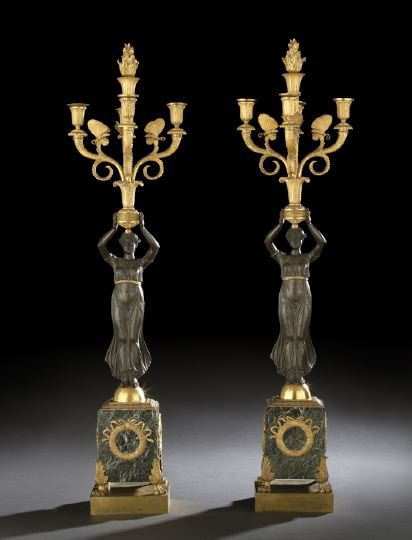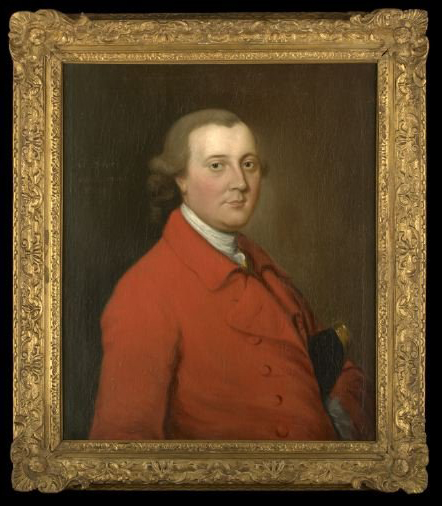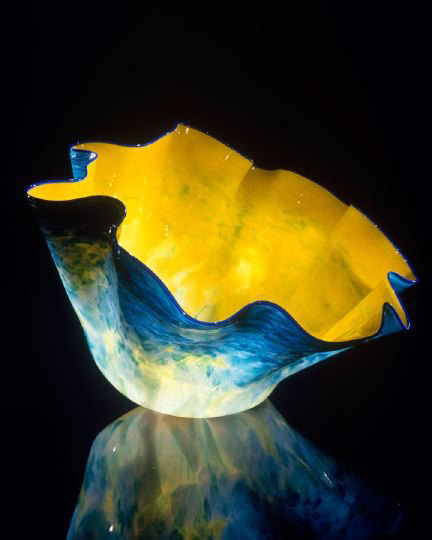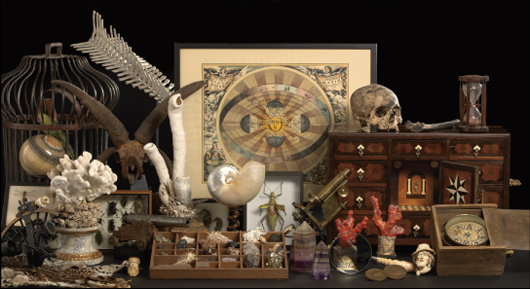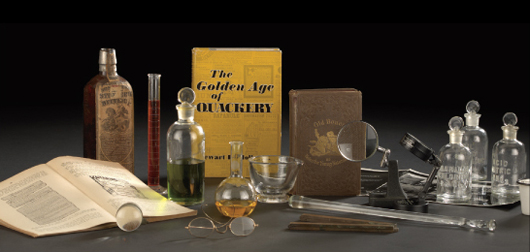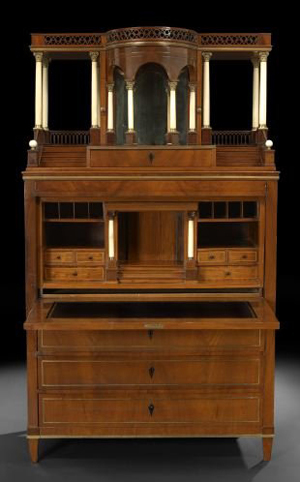
NEW ORLEANS – Furnishings from a historic Tennessee plantation, curios collected by a geology professor, Orientalia from a famous French Quarter shop and antiques from numerous estates have been assembled for a major auction by New Orleans Auction Galleries Inc. on June 6-7. LiveAuctioneers.com will provide Internet live bidding.
The sale will be held at New Orleans Auction Galleries, 801 Magazine St., beginning at 10 a.m. on Saturday and 11 a.m. on Sunday.
Art collectors will have the rare opportunity to buy a painting by Kate Freeman Clark (American, 1875-1957), one of the few important female American Impressionist painters. Tree by a Small Stream, Shinnecock Hills, circa 1896, is an oil on canvas, autumnal landscape, 16 1/4 by 20 1/4 inches. It has a $25,000-$40,000 estimate.
The daughter of a Vicksburg attorney, Clark pursued a career as a painter, enrolling in the Arts Students League in New York, where she studied under John H. Twachtman, attended watercolor classes taught by Irving Wiles and oil painting classes under William Merritt Chase, who would play an important role in her development as an artist. In 1896, for the first of six consecutive summers, Kate Freeman Clark attended Chase’s outdoor painting classes at Shinnecock Hills, Long Island. The location was perfect for an outdoor art school where the focus was “plein-air” painting, a term made famous by the French Barbizon painters of the mid-19th century.
At the turn of the century, Clark began submitting her work to important exhibitions using the name “Freeman Clark” in order to hide her gender. For a period of more than 20 years Clark had many works accepted into prestigious shows. William Merritt Chase’s death in 1916 and the changing mode of art, introduced by the New York Armory Show of Cubist paintings in 1913, disheartened her. After losing her grandmother in 1919 and her mother’s passing in 1922, Clark decided to give up painting and return to the family home in Mississippi. It is important to note that Clark never sold any of her paintings.
From Riverbend, the Tennessee plantation of Isaac W.R. Franklin, is a fine pair of George IV mahogany, giltwood and marbletop pier tables dating to the second quarter 19th century. Each has the incised stamp “Miles & Edwards, 134 Oxford St London.” The tables are 36 inches high, 69 inches wide and 19 1/4 inches deep. Purchased from Bernd Goeckler Antiques, New York, in 1996, the tables have a $14,000-18,000 estimate.
Also from the plantation is set of six Russian mahogany balloon-back dining chairs dating to the first quarter of the 19th century. Carved, ebony-detailed and parcel gilded in the neoclassical taste, the chairs are upholstered in emerald-green Napoleonic bee-figured silk. The set has a $6,000-9,000 estimate.
A Renaissance Revival walnut rolltop desk that features rotary pedestals represents the pinnacle of American furniture making in the last quarter of the 19th century. Similar to those made by Wooten, this desk retained a brass plaque reading, “The Shannon Co. Limited, Shannon Desk, London, Made in America.” The 60-inch-wide desk has a lace wood interior and a $3,000-$5,000 estimate.
For details phone New Orleans Auction Galleries at 504-566-1849. View the fully illustrated catalog and register to bid absentee or live via the Internet by logging on to www.LiveAuctioneers.com.
‘Numerous Lots of the Curious and Arcane‘
New Orleans Auction Galleries will offer a substantial number of objects from the estate of Dr. Hubert C. Skinner on June 6-7. A native Oklahoman, Skinner received his bachelor’s, Master’s and doctoral degrees at the University of Oklahoma. He began working for Texaco in 1952, who moved him to New Orleans.
He longed to teach, however, and so joined the faculty of Tulane University as a professor of geology and paleontology, where he remained for 43 years until his retirement in 1996. Stephen Nelson, chairman of Tulane’s earth and environmental sciences department, recalls that Dr. Skinner “loved the historical aspects of the science. He was probably one of the world’s experts on the history of geology.” His specialty was micropaleontology, the study of microscopic fossils.
Dr. Skinner was a prolific collector, and his passion for detail and the minute led to the creation of an award-winning stamp collection. He was one of the leading authorities on the subject of stamps of the Confederate States of America, the author of several books on the subject and the recipient of the 1994 Luff Award for Distinguished Philatelic Research.
His zeal for collecting was not limited to stamps, however, and he generated a diverse collection of worldly objects. The eclectic nature of his anthology invokes a comparison the the collecting phenomenon in 16th-century and 17th-century Europe, and the resulting creation of the “cabinet of curiosities,” by monarchs, princes and the gentry class.
During the Renaissance, a fascination with the natural world, global exploration, advancements in medicine, biology and mathematics, and a revival of interest in classical studies inspired these collections. Samuel Quiccheberg, a 16th-century art historian, wrote in Inscriptiones vel tituli theatri amplissimi, (1565), that God had placed man in a position to attain universal knowledge. To reach this goal, he encouraged one to “assemble all known types of natural phenomena, naturalia, and the most remarkable of human creations, artificialia, so that one’s collection would contain in a microcosmall that existed in God’s universe.”
The collecting passion began with kings, princes and aristocrats. Archduke Ferdinand II of Austria installed marvelous objects in the Ambras Schloss castle in Innsbruck. His treasury included fantastic pieces of coral, musical and scientific instruments, books 1,000 paintings, and many pieces of arms and armor. In Florence, Italy, Francesco I de Medici’s Studiolo was a secret room, decorated with paintings, adjacent to his bed chamber, containing among other rare things, a clock of amber, a table of gold, and many jewels. These affluent men were adhering to the classical precedent which suggested the greatness of a ruler could be displayed by his accumulation of rare and elegant personal possessions.
Further down the social scale, cabinets exhibited an encyclopedic compilation of objects relating to natural and manmade works, many of which were strange or exotic. Of this genre, the contents of British cabinets are the best examples to compare with Dr. Skinner’s collection, and other similar objects in the sale. One of the most familiar cabinets to cognoscenti is the collection assembled by the naturalist and gardener, John Tradescant, and his son, John Jr. This collection became the nucleus of the Ashmolean Museum at Oxford University in England. It was first housed in a building referred to as the “ark” located in Lambeth, a borough of London. A German traveler, George Stirn, visited the ark in 1683, and recorded the contents. An excerpt from the inventory follows:
… a piece of human flesh on a bone, olives, gourds, a piece of wood, an ape’s head …, all kinds of shells, … the hand of a mummy, all kinds of precious stones, coins, a picture wrought in feathers, … the robe of the King of Virginia, (Chief Powhatan’s mantle), a few goblets of agate, a girdle such as the turks wear in Jerusalem, the passion of Christ carved very daintily on a plumstone, a large magnet stone, … pipes from the East and West Indies … “
One of the earliest documented cabinets was that of a politician, Walter Cope. He had an apartment in London “stuffed with queer foreign objects in every corner including “an African charm made of teeth, a unicorn’s tail, a mummified child, a Chinese cap made of goose foots [sic], Queen Elizabeth’s seal-around horn, which had grown on an Englishwoman’s forehead, and an Indian canoe suspended from the ceiling.”
Another small, sundry collection was compiled by Canon John Bargrave in the 17th century. Originally contained in three cupboards, the contents included the mummified finger of a French soldier, a working model of a human eye, jasper stone from an obelisk in Rome, wampum beads, a Roman terracotta oil lamp, an embalmed chameleon, coins, and Roman gems. Canon Bargrave’s widow gave his collection to Centerbury Cathedral after his death and as recently as 2000, one cupboard remained in the vaults of the church.
The contents of the above-mentioned cabinets cover a broad spectrum including scientific instruments, minerals, manuscripts, unusual zoological specimens, oddities of nature, and natural and manmade objects from Asia and the Americas. The range of objects complements Dr. Skinner’s collection offered in this sale, which includes a large, grotesque, copper Nepalese mask of the demon Bhairab, a wide variety of stone,s fossilized remains and shells, a shrunken head from the upper Amazon, microscopes and scientific equipment – some obtained as vintage curiosities, others working tools of Dr. Skinner’s laboratory – several celestial maps, a large collection of pre-Columbian art, Pueblo pottery, a selection of spears from Oceania, Ethiopian Harari baskets, a variety of butterflies, sea horses, beetles and assorted scientific ephemera.
Cabinets of Curiosity were the forerunners of museums. Like the Tradescant collection, some were absorbed into institutions, some into other private collections, some simply disappeared over time. Michael Kimmelman, art critic and frequent contributor to The New York Times, wrote several years ago, “Museums grew out of the old wonder cabinets. … it has everything to do with curiosity, which is what makes us human. It is a curiosity that serves the pleasures of the spirit.” Curiosity is the characteristic that nourished Dr. Skinner’s multifaceted, acquisitive nature.
Reverences:
Impey, Oliver and MacGregor Arthur, ed. The Origins of Museums: The Cabinet of Curiosities in 16th and 17 Century Europe. Oxford: Oxford University Press, 1985.
Pope, John. “Hubert Skinner, Expert on Fossils and Stamps.” New Orleans Times-Picayune, March 3, 2009.
Swann, Marjorie. Curiosities and Texts: The Culture of Collecting in Early Modern England. Philadelphia: University of Pennsylvania Press, 2001.
ADDITIONAL LOTS OF NOTE
